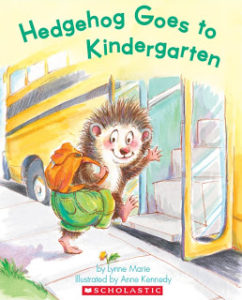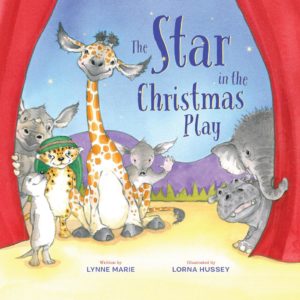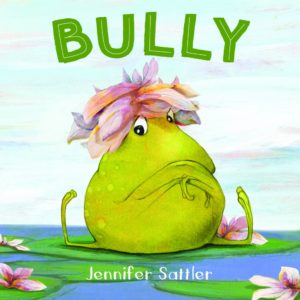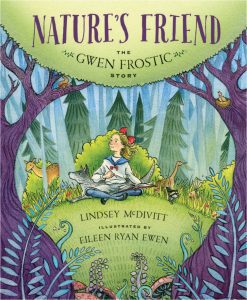It’s my pleasure to announce that the November 2018 Industry Insider interview is with editor Marilyn Brigham of Two Lions/Amazon Publishing. I’ve been a fan of Two Lions for some time now, so it’s a real treat to get the inside story on what makes the magic work so well there.
Here’s a bit about Marilyn:
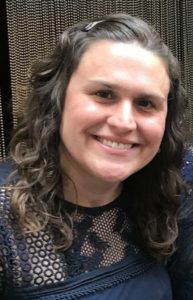 In her 13+ years in the children’s book industry, Marilyn has edited 100+ trade children’s books, including picture books, chapter books, middle grade fiction, young adult fiction, and nonfiction. Some of her noteworthy titles include the Duck and Hippo Series by Jonathan London, illustrated by Andrew Joyner; the Amazon bestseller Goodnight, Little Monster and its sequels by Helen Ketteman, illustrated by Bonnie Leick; It’s Not Jack and the Beanstalk by Josh Funk, illustrated by Edwardian Taylor; and Ralph Tells a Story by Abby Hanlon.
In her 13+ years in the children’s book industry, Marilyn has edited 100+ trade children’s books, including picture books, chapter books, middle grade fiction, young adult fiction, and nonfiction. Some of her noteworthy titles include the Duck and Hippo Series by Jonathan London, illustrated by Andrew Joyner; the Amazon bestseller Goodnight, Little Monster and its sequels by Helen Ketteman, illustrated by Bonnie Leick; It’s Not Jack and the Beanstalk by Josh Funk, illustrated by Edwardian Taylor; and Ralph Tells a Story by Abby Hanlon.
But Marilyn’s also a writer–she’s the author of the board book Swim!, illustrated by Eric Velasquez, as well as the educational title Dik-Dik, part of the Even Weirder and Cuter Series from Bearport Publishing.
So let’s have Marilyn put that editing and writing acumen to good use with some OPB interview goodness. Here we go!
Amazon publishing website: www.amazonpublishing.amazon.com
Twitter: @MarilynBrigham
RVC: So how does someone from Syracuse University who got a proper degree in journalism manage to end up in the kidlit business?
MG: Well, I thought I was going to get a magazine job after graduation, but I’m glad that I found myself at a book publisher instead! I started my career as an intern in the reference department at Marshall Cavendish, and I got lucky when an editorial assistant job opened up at the company a couple months later. It was a truly special place to work. The office was an old Georgian mansion in Westchester County, NY, filled with secret passageways and quirky offices, and I worked with an amazing team. I learned so much about the business of publishing and editing in general during my time there. As an assistant, I worked on the trade children’s book imprint as well as nonfiction series for the school and library market, and I ultimately worked up to editor in the Marshall Cavendish Children’s Books imprint.
I’m a lover of words, as are many of my closest friends, and I was obsessed with reading as a kid, so it’s not too surprising that I ended up working with books.
RVC: What’s the best thing about being in the kidlit business?
MG: Definitely the people! The KidLit community is full of so many creative and inspiring people (authors, illustrators, editors, marketing and PR folks, designers, the list goes on). I also love that it’s a very supportive industry and that in general, the KidLit community helps build up one another and celebrate everyone’s successes. Plus, there’s something inherently special about people who spend their days thinking about how we can enrich the lives of children through storytelling. I feel it when I go to conferences, such as ALA (American Library Association) or SCBWI (Society of Children’s Book Writers & Illustrators), and get to be surrounded by these people—my people!
We recently exhibited at ALA Annual in New Orleans, and the enthusiasm that the librarians had for our authors was such a good reminder of why we do what we do. One librarian started crying when she met our author Jonathan London, because she had shared so many of his books over the years with her own child. It was such a sweet moment!
 RVC: Unlike many people in publishing, you’re an author, too–your board book, Swim!, came out in 2012, and your educational title, Dik-Dik, came out in 2017. Are you a writer who edits, or an editor who writes?
RVC: Unlike many people in publishing, you’re an author, too–your board book, Swim!, came out in 2012, and your educational title, Dik-Dik, came out in 2017. Are you a writer who edits, or an editor who writes?
MG: I’d love to say I’m a writer who edits, but I don’t think I spend nearly as much time writing as I should! I really envy my authors for their discipline. I find it much easier to stay laser-focused on work when I’m on the editing side of the table. (Yes, writers, the struggle is real!)
But no matter which side of the table I’m on, I know I am so lucky to be able to do this work for a living.
RVC: LinkedIn tells me that you have “a lengthy (digital) stack of half-finished manuscripts” that you dig into whenever you can. What would the editor side of you say to the writer side of you in regards to the unpublished picture book manuscripts in that digital stack? And what about the picture book manuscripts you’ve already published?
MG: She would say, keep going! And write it before someone else does! While it’s definitely important sometimes to put a manuscript aside for a while and let it marinate, you also can’t leave it there forever. With picture books especially, I’ve seen that ideas can catch on all at once—I’ll suddenly get multiple picture book submissions on the same topic. It’s so weird how that happens!
In terms of the books I’ve published, of course I can’t help thinking about what I might have changed (editors die hard!), but I really try not to. It’s thrilling to see my name in print, and I don’t want to argue with it!
RVC: Could you share the connection between Marshall Cavendish Children’s Books and Two Lions, which just so happens to mirror your own career path?
MG: I was working at Marshall Cavendish Children’s Books when Amazon acquired some of their titles and backlist in 2012. It was exciting to go on the journey along with the authors and illustrators from the Marshall Cavendish list. For me, it was also an amazing opportunity to help shape the vision of what is now the Two Lions imprint. We came up with the Two Lions name as a way to tie together the great history of our backlist and our new future as part of Amazon Publishing. The name was also a nod to “Patience and Fortitude,” the two lions who stand proudly in front of the New York Public Library.
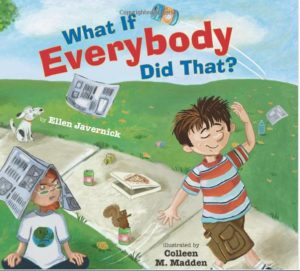 As an editor, it’s given me a special thrill to see some of the Marshall Cavendish books, such as What If Everybody Did That? by Ellen Javernick, illustrated by Colleen Madden, and Goodnight, Little Monster, by Helen Ketteman, illustrated by Bonnie Leick, reach an even wider audience at Amazon Publishing and become bestsellers years after their original publications. In fact, we’ve published sequels to both of those titles and now have a third book in each series still to come. This is in addition to so many great new titles and series that have been homegrown in the Two Lions imprint.
As an editor, it’s given me a special thrill to see some of the Marshall Cavendish books, such as What If Everybody Did That? by Ellen Javernick, illustrated by Colleen Madden, and Goodnight, Little Monster, by Helen Ketteman, illustrated by Bonnie Leick, reach an even wider audience at Amazon Publishing and become bestsellers years after their original publications. In fact, we’ve published sequels to both of those titles and now have a third book in each series still to come. This is in addition to so many great new titles and series that have been homegrown in the Two Lions imprint.
We’ve also had a lot of fun over the years trying out new programs to promote our books at Two Lions. One year, we did kid book review videos and had kids read our books and then talk about what they liked (and in some cases, how they’d give the books “ten million bajillion stars”!). In 2019, we’re working on animated trailers for all of our new titles—it’s a blast to see our characters coming alive on the screen!
RVC: What’s different about working at Two Lions? What does being connected to the 800 lb. sales gorilla (Amazon) do for you?
MG: I’ve had the unique experience of coming from a very traditional publishing background and then going into a new and innovative publishing company. Working at Two Lions challenges me to constantly rethink my own biases and helps me find new ways to be inventive within the industry. We have a lot of freedom to bring new ideas to the table, and there’s an openness and encouragement to trying new things.
But one of the things I love most about working at Two Lions is the emphasis that we place on author and illustrator happiness. We see authors and illustrators as our customers, and we spend a lot of time thinking about them, developing our relationships with them, and soliciting their feedback (and I’ve seen real changes happen as a result). I’ve also had the opportunity to dip my toes into the creation of other content for kids, including enhanced eBooks and short stories for an app, which has helped expand my own skillset.
RVC: It seems as if Two Lions is making more of an effort to acquire and translate non-English work. How does that shift relate to the growing kidlit interest in diversity and Own Voices? How conscientious of that are you when you’re deciding whether or not to champion a picture book submission?
MG: We’re very excited to be getting into the world of picture-book translation! Amazon Publishing already has a long history of bringing translated works from around the world to the United States with our imprint, Amazon Crossing, and it’s a unique opportunity for me to help build on that legacy with children’s books from around the globe. I recently signed up my first book, Spiky, written and illustrated by Ilaria Guarducci and translated by Laura Watkinson. The book hails from Italy, where it was shortlisted for a picture book award. It’s about an evil forest creature named Spiky whose body is covered in spikes. When Spiky suddenly loses his spikes, he must learn what it means to be a friend. Spanish, French, Chinese, and Korean rights to the book have also been sold, which I think speaks to the universal message of the book. But I also love how the story has a distinctly Italian feel to it as well, and we’ve retained some of the small Italian details in the art, such as an Italian newspaper, as something for kids to discover on their own.
I think the timing of our picture books in translation couldn’t be better with the focus on diversity and #OwnVoices in KidLit. There are so many elements regarding diversity to consider—race, nationality, sexuality, disability—and I think that non-American perspectives are also so important to include. As corny as it sounds, the kids really are our future, and giving them diverse perspectives is so vital to helping them become better global citizens. It’s exciting that we’re at a moment in history when diverse perspectives and characters are being championed and becoming bestsellers. Diversity is definitely on my mind when considering acquisitions, as well as through the editing and art creation process. And I still have so much more to learn in this area, too!
RVC: The other day, you tweeted praise for Leila Sales’ Publisher’s Weekly article “What Authors and Editors Wish They Could Say to One Another.” I came across that piece as well and found it both honest and useful. But what’s one more thing you’d add to the list that editors wish they could just say (scream?) at authors?
MG: I would add: Picture books are a long game. It’s easy to feel impatient and frustrated as the pieces come together. Plus, holiday and seasonal timing can be so important. I want my authors to know that I get antsy for the pub dates to come, too! The best thing you can do while you wait is to keep creating.
(And I promise that one day you will blink, and the pub date will be here!)
RVC: What kinds of picture books do you think the marketplace (and maybe Two Lions specifically?) is missing?
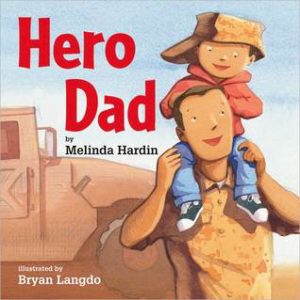 MG: I think it’s always difficult to find picture books that touch on sensitive, emotional topics (for example, death), while also handling the subject matter in a way that’s not overly sentimental or heavy handed. There are a lot of trying issues that kids face, too, and I’d love to see more picture books that address difficult topics.
MG: I think it’s always difficult to find picture books that touch on sensitive, emotional topics (for example, death), while also handling the subject matter in a way that’s not overly sentimental or heavy handed. There are a lot of trying issues that kids face, too, and I’d love to see more picture books that address difficult topics.
One of the books I had the pleasure to work on was Hero Dad, written by Melinda Hardin and illustrated by Bryan Langdo. In the book, a little boy compares his dad, who is in the military, to a superhero. Using minimal text and focused images, the author and illustrator created such a strong, heart-warming, and accessible book for kids. The book has also been featured in commercials for the Wounded Warrior Project, which has been very rewarding to see.
We followed it up with Hero Mom, because of course moms are superheroes too! That book featured a diverse group of kids and showed the many jobs their moms do in the military and why they are like superheroes.
RVC: Want to dish on a few of your favorite upcoming projects?
MG: Always! I’m super excited about a few debut authors I have coming in 2019. The first is Lauren H. Kerstein with her book Rosie the Dragon and Charlie Make Waves, illustrated by Nate Wragg, which is a funny summertime romp about a boy who is teaching his pet dragon to swim. The second is Lisa Robinson, who has two titles forthcoming with Two Lions: Pirates Don’t Go To Kindergarten!, illustrated by Eda Kaban, a first-day-of-kindergarten story featuring a pirate-loving little girl who makes her former preschool teacher walk the plank; and Pippa’s Night Parade, illustrated by Lucy Fleming, about a little girl with a wild imagination who has to tame the creatures that are coming out of her storybooks each night.
Additionally, author Joy Jordan-Lake, who is published on Amazon Publishing’s Lake Union imprint, has her first picture book to come with Two Lions: A Crazy-Much Love, illustrated by Sonia Sánchez, a heartfelt and deeply personal story about a parent’s love for her adopted child. These authors are a talented bunch, and I can’t wait to introduce them to readers!
RVC: So it’s time for the Speed Round! Ready … GO! Best place in NYC to take a literary agent or Two Lions author for a slice of pizza?
MG: I’d probably opt for wood-fired in this scenario and have to give a shout-out to PizzArte, which is right near my office and SO good.
RVC: “If I never got into writing or editing, I’d instead be ________”
MG: In a career related to animals, for sure. Maybe a veterinarian. Biology was always my favorite area of science, and I have a deep love for animals. Plus, I don’t get grossed out too easily.
(Just keep bees far, far away from me, and we’ll be good!)
RVC: If you could sing one song–and one song only–on American Idol, what would it be?
MG: Hmm, probably something old and classic, like “You’ve Got a Friend” by Carol King.
(P.S. I don’t think I’d win, though!)
RVC: The #1 reason you turn down a picture book manuscript submission?
MG: It’s not a fit with our publishing program. At Two Lions we’re focused on books that have both commercial and literary appeal, and that have well-developed story arcs and character arcs. We also look for holiday and seasonal-themed books.
Our list is relatively small, so if we already have something similar on our list, we’ll likely have to pass. There are a lot of great books out there that deserve to be published but don’t necessarily fit for us.
RVC: Favorite under-appreciated picture book?
MG: Well, it’s not really under-appreciated, but I think Good Night, Gorilla by Peggy Rathmann is one of the best picture books of all time! I actually never read it until I had my son, but it’s a little piece of genius! So if you haven’t yet read it, go do it. Now.
RVC: What makes a Two Lions picture book a Two Lions picture book?
MG: It’s a book that you want to hug! And then read again.
RVC: Thanks so much, Marilyn!

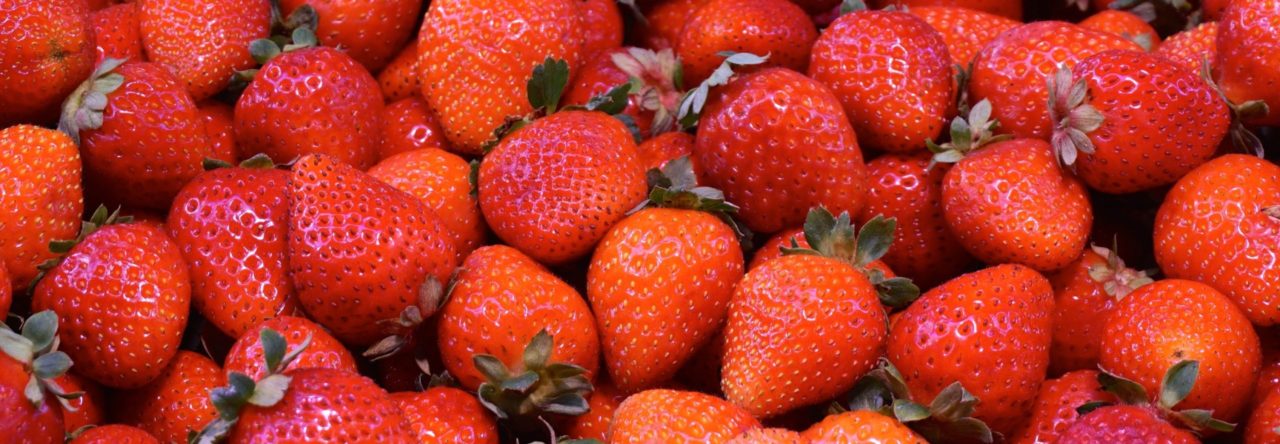
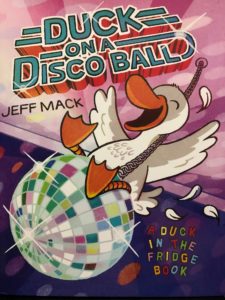
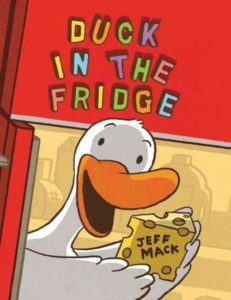
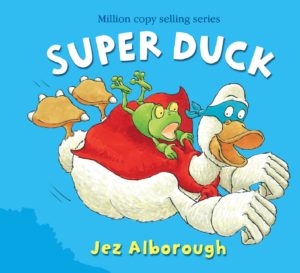
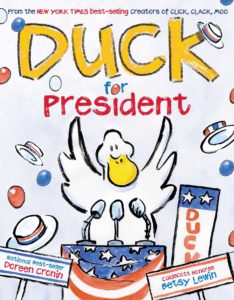
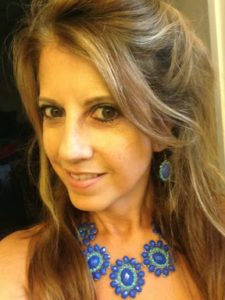 This month’s author interview is with Florida writer Lynne Marie. Before the official
This month’s author interview is with Florida writer Lynne Marie. Before the official 